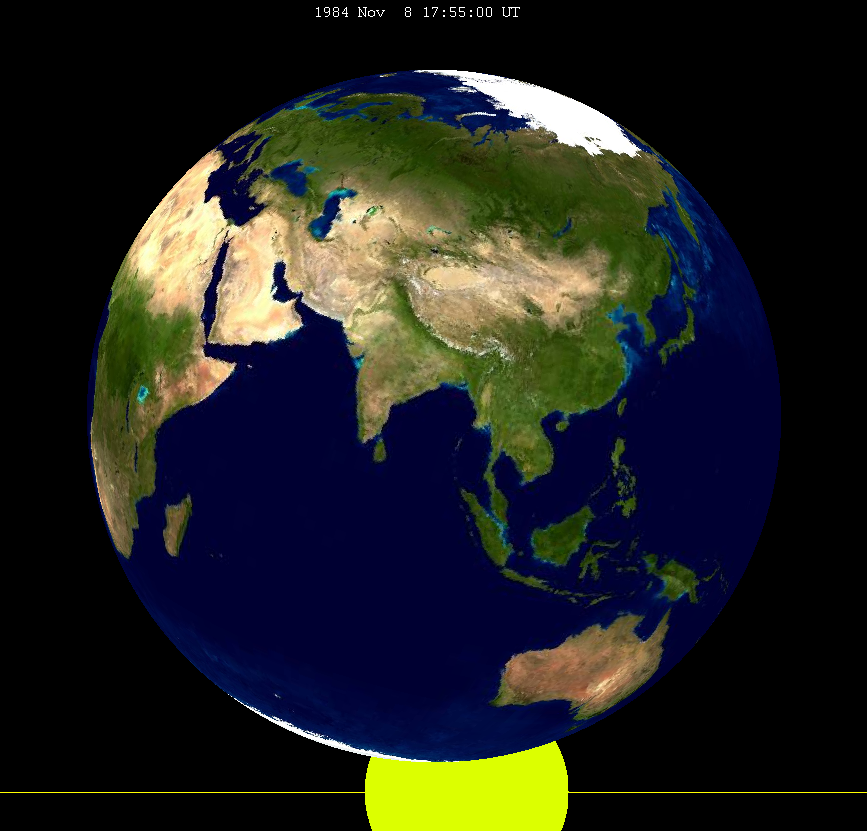November 1984 Lunar Eclipse on:
[Wikipedia]
[Google]
[Amazon]
A penumbral

lunar eclipse
A lunar eclipse occurs when the Moon moves into the Earth's shadow. Such alignment occurs during an eclipse season, approximately every six months, during the full moon phase, when the Moon's orbital plane is closest to the plane of the Earth ...
took place on Thursday, November 8, 1984, the last of three lunar eclipses in 1984. This subtle penumbral eclipse may have been visible to a skilled observer at maximum eclipse. 90% of the Moon's disc was partially shaded by the Earth (none of it was in total shadow), which caused a gentle shadow gradient across its disc at maximum; the eclipse as a whole lasted 4 hours and 28 minutes.
Visibility

Related eclipses
Eclipses of 1984
* A penumbral lunar eclipse on May 15. * An annular solar eclipse on May 30. * A penumbral lunar eclipse on June 13. * A penumbral lunar eclipse on November 8. * A total solar eclipse on November 22.Lunar year series
Metonic series
This eclipse is the first of fiveMetonic cycle
The Metonic cycle or enneadecaeteris (from grc, ἐννεακαιδεκαετηρίς, from ἐννεακαίδεκα, "nineteen") is a period of almost exactly 19 years after which the lunar phases recur at the same time of the year. The recu ...
lunar eclipses on the same date, November 8–9, each separated by 19 years:
Half-Saros cycle
A lunar eclipse will be preceded and followed by solar eclipses by 9 years and 5.5 days (a half saros).Mathematical Astronomy Morsels, Jean Meeus, p.110, Chapter 18, ''The half-saros'' This lunar eclipse is related to two partial solar eclipses of Solar Saros 123.See also
* List of lunar eclipses * List of 20th-century lunar eclipsesNotes
External links
* 1984-11 1984 in science November 1984 events {{lunar-eclipse-stub